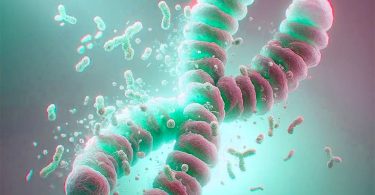Review of scientific publications.
Osteoarthritis, cataracts, wound healing disorders … these direct consequences of glycation are all improved by rosmarinic acid, sometimes dramatically (1) (2) (3).
Also very interesting, many parameters associated with diabetes and in particular chronic low-grade inflammation are also improved by rosmarinic acid (4) (5).
Even more surprisingly, rosmarinic acid has shown itself to be a promising candidate for the prevention of Alzheimer‘s (6).
Finally, it could be an ingredient promoting healthy longevity (7).
Molecule derived from food plants, rosmarinic acid has a very good safety profile depending on the types of plants used. Its effectiveness is based on careful plant selection and very sophisticated extraction and fractionation techniques. This is why products containing rosmarinic acid do not all have the same safety and efficacy profile.
Age Breaker, whose researchers were the first to discover the deglycating effect of rosmarinic acid (8), has developed a molecular fraction derived from a bioguided extraction of Rosmarinus officinalis, offering total safety with efficacy 2,4 times greater than that of pure rosmarinic acid.
© Age Breaker 07 2021
[Glycation is one of the major causes of aging. Resulting from the fixation of sugars on the proteins constituting the organism, glycation generates toxic compounds that cause cellular aging. Glycation is particularly involved in metabolic disorders, skin aging and cognitive decline.] [AGE BREAKER, patented nutritional supplements, based on rosmarinic acid, recognized by aging specialists around the world for their properties to reverse the effects of glycation.]More on www.agebreaker.com
#agebreaker #glycation
(1): Zhong-Nan Hu et al. The inhibitory effects of rosmarinic acid on catabolism induced by IL-1β in rat chondrocyte. 2018 12. Doi 10.18388/abp.2018_2607
(2): M. Chemerovski-Glikman et Al. Rosmarinic Acid Restores Complete Transparency of Sonicated Human Cataract Ex Vivo and Delays Cataract Formation In Vivo. Scientific Reports. 2018; 8: 9341. Published online 2018 Jun 19. Doi: 10.1038/s41598-018-27516-9
(3): P. Chhabra et Al. Augmented healing of full thickness chronic excision wound by rosmarinic acid loaded chitosan encapsulated graphene nanopockets. Published online: 13 May 2020. Doi.org/10.1080/03639045.2020.1762200
(4): Sol María Quirarte-Báez et Al. A shortened treatment with rosemary tea (rosmarinus officinalis) instead of glucose in patients with diabetes mellitus type 2 (TSD) Sol, A Journal of Population Therapeutics & Clinical Pharmacology. Original Research. 2019 Dec 3;26(4):e18-e28. Doi: 10.15586/jptcp.v26i4.634.
(5): L. Vasileva et al. Rosmarinic acid attenuates obesity and obesity-related inflammation in human adipocytes. Food Chem Toxicol. 2021. Mar;149:112002. Doi: 10.1016/j.fct.2021.112002
(6): T. Hase et Al. Rosmarinic acid suppresses Alzheimer’s disease development by reducing amyloid β aggregation by increasing monoamine secretion. Scientific reports 8711. June 2019. Doi.org/10.1038/s41598-019-45168-1
(7): Chunxiu Lin et Al. Rosmarinic acid improved antioxidant properties and healthspan via the IIS and MAPK pathways in Caenorhabditis elegans. Biofactor. First published: 17 June 2019. Doi.org/10.1002/biof.1356
(8): D. Jean et Al. Evaluation in vitro of AGE-crosslinks breaking ability of rosmarinic acid. Institut des Substances Végétales, Clermont-Fd, France. Glycative Stress Research Center, Doshisha University, Kyoto, Japan. 12 2015. Doi.org/10.24659/gsr.2.4_204









